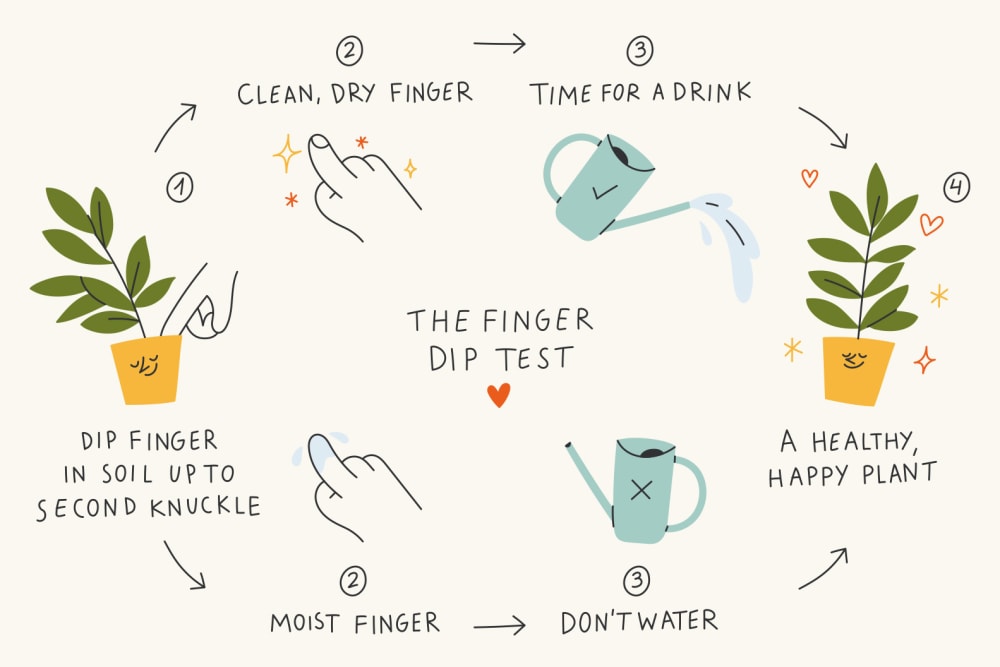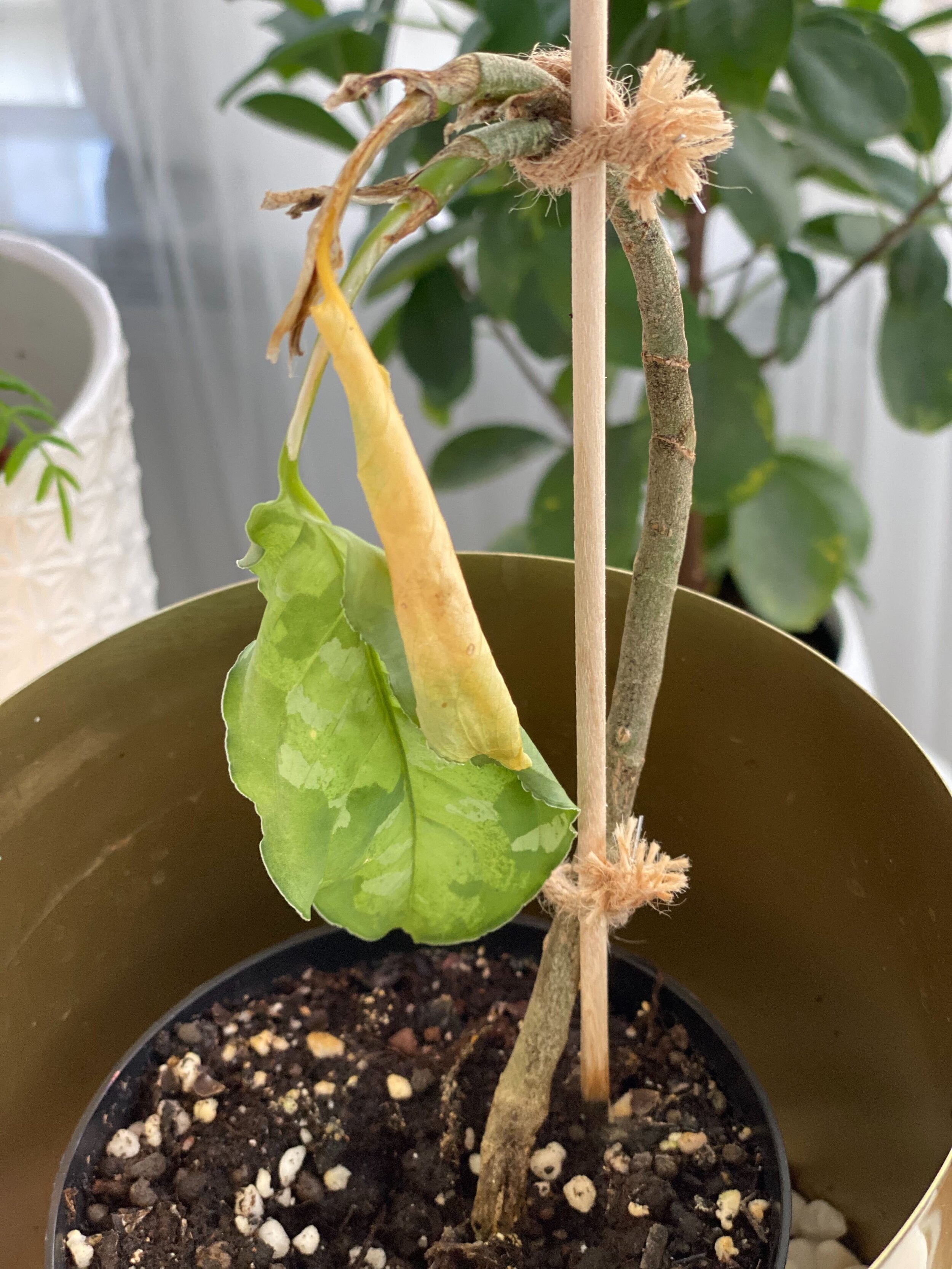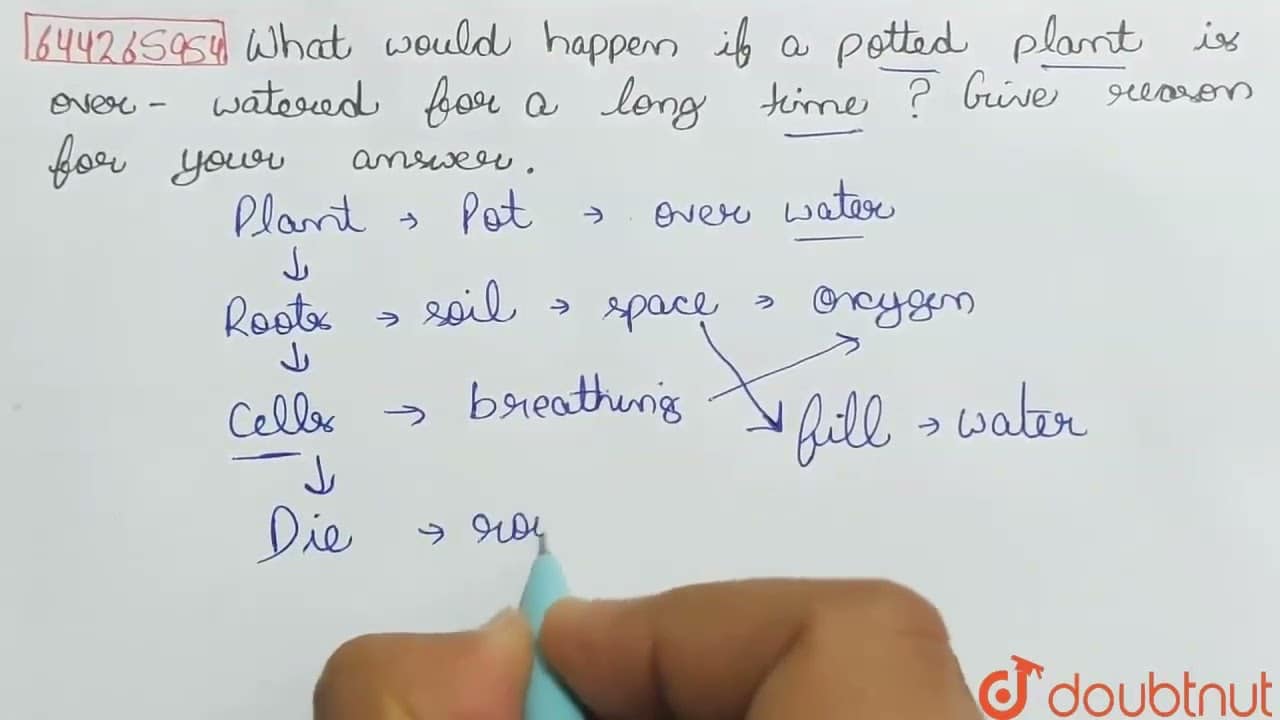Overwatering a potted plant can lead to root rot and hinder its growth. The plant may eventually die if not corrected.
Overwatering is a common mistake that many plant enthusiasts make. It occurs when plants receive more water than they can absorb. This leads to waterlogged soil, depriving roots of essential oxygen. Healthy roots are crucial for nutrient uptake and overall plant health.
Root rot, a severe consequence of overwatering, can be fatal. Symptoms include yellowing leaves, wilting, and stunted growth. To prevent overwatering, check soil moisture before watering and ensure proper drainage. Using pots with drainage holes can help maintain the right balance. Understanding these basics is vital for keeping your potted plants healthy and thriving.
Signs Of Overwatering
Overwatering a potted plant can cause severe damage. Recognizing the signs early can save your plant. This section will help you identify the symptoms of overwatering.
Yellowing Leaves
One of the first signs of overwatering is yellowing leaves. These leaves might also feel soft and mushy. Overwatered plants often look unhealthy and sick. The roots can’t get enough oxygen. This causes the leaves to turn yellow.
Wilting Despite Water
Another sign is wilting despite water. Overwatered plants can wilt even if the soil is moist. This happens because the roots rot. Rotten roots can’t absorb water properly. As a result, the plant wilts and looks droopy.
| Signs | Explanation |
|---|---|
| Yellowing Leaves | Leaves turn yellow and feel soft due to lack of oxygen. |
| Wilting Despite Water | Plant wilts because rotten roots can’t absorb water. |
- Check soil moisture regularly.
- Ensure proper drainage for your pots.
- Use pots with drainage holes.
Root Health
Healthy roots are vital for a potted plant’s growth. They absorb nutrients and water. Overwatering can severely affect root health. Let’s explore some common issues.
Root Rot
Root rot is a common problem caused by overwatering. The roots sit in soggy soil. This lack of oxygen leads to decay. The affected roots turn brown and mushy. Healthy roots should be white and firm.
Signs of root rot include:
- Yellowing leaves
- Wilting despite wet soil
- Foul smell from the soil
It’s crucial to check your plant’s roots regularly. Early detection can save your plant.
Fungal Infections
Overwatered plants are prone to fungal infections. Excess moisture creates a breeding ground for fungi. Common fungal issues include powdery mildew and damping-off disease.
Symptoms of fungal infections:
- White, powdery spots on leaves
- Stem discoloration
- Leaf drop
To prevent fungal infections, ensure proper drainage. Avoid watering your plant too frequently.
| Problem | Symptoms | Prevention |
|---|---|---|
| Root Rot | Brown, mushy roots; Yellowing leaves | Check roots regularly; Ensure good drainage |
| Fungal Infections | White spots on leaves; Stem discoloration | Avoid overwatering; Provide good air circulation |
Soil Conditions
A plant’s health depends greatly on its soil conditions. Overwatering a potted plant can drastically alter these conditions. This can lead to various problems. Understanding how soil reacts to excess water is key. Let’s explore the effects on soil.
Waterlogged Soil
Overwatering leads to waterlogged soil. This means the soil becomes too wet. When the soil is waterlogged, it cannot hold air. Plants need air in the soil to breathe. Without air, roots can rot. This is bad for the plant’s health.
Nutrient Leaching
Excess water can cause nutrient leaching. This means nutrients wash away from the soil. Plants need these nutrients to grow. Without them, plants become weak. They may not produce flowers or fruits. The plant’s overall growth slows down.
| Condition | Effect on Plant |
|---|---|
| Waterlogged Soil | Roots rot, no air in soil |
| Nutrient Leaching | Nutrients wash away, plant weakens |
To avoid these issues, water plants properly. This ensures the soil remains healthy.

Credit: www.patchplants.com
Plant Growth
Overwatering a potted plant can harm its growth. Proper watering is key to healthy plants.
Stunted Growth
Overwatered plants often show stunted growth. Their roots can rot due to excess water. Rotting roots cannot absorb nutrients. The plant lacks the food it needs to grow. This results in small and weak plants.
Leaf Drop
Overwatered plants may experience leaf drop. Too much water causes stress in plants. The leaves turn yellow and fall off. This weakens the plant further. Healthy leaves are essential for photosynthesis. Without them, the plant struggles to make food.
Here are some signs of overwatering:
- Yellowing leaves
- Mushy roots
- Dropping leaves
Proper watering practices can prevent these issues. Always check the soil before watering. Let the top inch of soil dry out. Use pots with good drainage holes.
| Healthy Plant | Overwatered Plant |
|---|---|
| Bright green leaves | Yellow, dropping leaves |
| Strong, firm roots | Mushy, rotting roots |
| Steady growth | Stunted growth |
Pest Infestations
Overwatering your potted plants can lead to pest infestations. These pests thrive in moist environments. They can harm your plants and home. Let’s explore this issue with specific focus areas.
Increased Insects
Overwatered plants can attract more insects. Moist soil is a breeding ground for pests like fungus gnats. These tiny insects lay eggs in damp soil. The larvae feed on plant roots, causing damage.
- Fungus gnats
- Root aphids
- Spider mites
Root aphids also prefer moist conditions. They suck sap from plant roots, weakening the plant. Spider mites love humid environments. They spin webs on leaves and suck out plant juices.
Mold Growth
Overwatering can cause mold to grow. Mold spores thrive in wet soil and on plant surfaces. Mold can spread quickly, affecting plant health.
Types of Mold:
- White mold
- Gray mold
- Powdery mildew
White mold appears as a fuzzy substance on soil. It can weaken plant roots. Gray mold often grows on leaves and stems. It causes rot and decay. Powdery mildew looks like a white powder on leaves. It can stunt plant growth.
| Pest | Signs | Effect |
|---|---|---|
| Fungus Gnats | Small flies near soil | Root damage |
| Root Aphids | Yellowing leaves | Weak plants |
| Spider Mites | Webs on leaves | Leaf loss |
To avoid these issues, ensure proper watering habits. Let the soil dry out between waterings. Use pots with drainage holes. Keep your plants healthy and pest-free!

Credit: getplanta.com
Preventive Measures
To avoid overwatering your potted plant, you need to take some preventive measures. These simple steps will help keep your plants healthy and happy. Let’s dive into some effective methods.
Proper Drainage
One key factor to prevent overwatering is ensuring proper drainage. Always use pots with drainage holes. These holes allow excess water to escape, preventing root rot.
You can add a layer of small rocks or pebbles at the bottom of the pot. This layer helps improve drainage and keeps the roots from sitting in water.
Consider using a well-draining soil mix. Such soil contains materials like sand or perlite. These components help water flow through easily, avoiding waterlogged conditions.
Watering Schedule
Another important step is establishing a consistent watering schedule. Overwatering usually happens when plants are watered too frequently.
Check the soil before watering. Insert your finger about an inch into the soil. If it feels dry, it’s time to water. If it’s moist, wait a day or two.
Create a watering routine based on your plant’s needs. Some plants need more water, while others need less. Research your plant type to understand its specific requirements.
Using a watering can with a narrow spout can help control the amount of water. This tool ensures you don’t drown your plant with too much water at once.
Here’s a simple watering schedule table for common houseplants:
| Plant Type | Watering Frequency |
|---|---|
| Succulents | Every 2 weeks |
| Ferns | Once a week |
| Spider Plants | Every 5-7 days |
Following these preventive measures can keep your potted plants thriving. Proper drainage and a good watering schedule are essential.
Reviving Overwatered Plants
Overwatering a potted plant can cause severe damage. Roots rot and leaves turn yellow. But, you can save your plant. Follow these steps to revive it.
Removing Affected Parts
First, inspect the plant. Look for wilted, yellow, or mushy leaves. Use clean scissors or pruning shears. Carefully cut off these affected parts. Remove any blackened or slimy roots. This helps prevent further damage and promotes new growth.
Repotting Techniques
Repotting can give your plant a fresh start. Choose a pot with good drainage holes. Use fresh, well-draining soil. Gently remove the plant from its current pot. Shake off the old, wet soil from the roots.
| Step | Description |
|---|---|
| 1 | Select a pot with drainage holes |
| 2 | Use fresh, well-draining soil |
| 3 | Remove plant and shake off old soil |
| 4 | Repot plant in new soil |
Place the plant in the new pot. Fill with fresh soil around the roots. Press the soil gently to remove air pockets. Water lightly, but don’t soak the soil. Place the plant in indirect sunlight. This helps it recover without stress.
Remember, patience is key. Overwatered plants need time to heal. Monitor your plant closely. Adjust your watering habits to prevent future issues.
Long-term Effects
Overwatering a potted plant can lead to serious long-term effects. These effects can cause irreversible damage to the plant. Below, we discuss the most significant long-term impacts.
Weakened Immune System
Overwatering weakens the plant’s immune system. The roots become waterlogged and cannot absorb oxygen. Lack of oxygen makes the plant vulnerable to diseases. Fungal infections thrive in damp conditions. Root rot is a common issue with overwatered plants.
Lifespan Reduction
Plants that are overwatered tend to have a shorter lifespan. The stress from overwatering affects their growth. They may show stunted growth and pale leaves. Over time, these plants will die sooner than healthy ones.
| Effect | Description |
|---|---|
| Weakened Immune System | Roots can’t absorb oxygen, leading to fungal infections. |
| Lifespan Reduction | Overwatered plants grow poorly and die sooner. |
- Oxygen Deprivation: Roots need oxygen to stay healthy.
- Fungal Infections: Fungi thrive in moist conditions.
- Root Rot: Common issue due to waterlogged soil.
- Stunted Growth: Overwatered plants grow poorly.
- Pale Leaves: An indicator of stress in plants.

Credit: brainly.in
Frequently Asked Questions
How Do You Fix Over Watered Potted Plants?
Remove the plant from the pot. Let the roots dry out. Trim any damaged roots. Repot with fresh, dry soil. Avoid overwatering in the future.
Can Overwatered Plants Recover On Their Own?
Yes, overwatered plants can recover. Ensure proper drainage, reduce watering, and allow soil to dry. Monitor plant health closely.
Can You Dry Out An Overwatered Plant?
Yes, you can dry out an overwatered plant. Remove excess water, improve drainage, and allow the soil to dry.
How Do You Tell If A Potted Plant Is Overwatered?
Overwatered potted plants show yellowing leaves, wilting, and soggy soil. Root rot and mold on the soil surface are common signs.
Conclusion
Overwatering a potted plant can lead to root rot and poor growth. Proper watering is essential for plant health. Ensure soil drains well to prevent waterlogging. Check moisture levels before watering to maintain the right balance. By doing so, you’ll keep your potted plants thriving and healthy.

My mission is to help you bring the beauty of nature indoors with expert advice, detailed plant care guides, and creative design ideas.





Leave a Reply